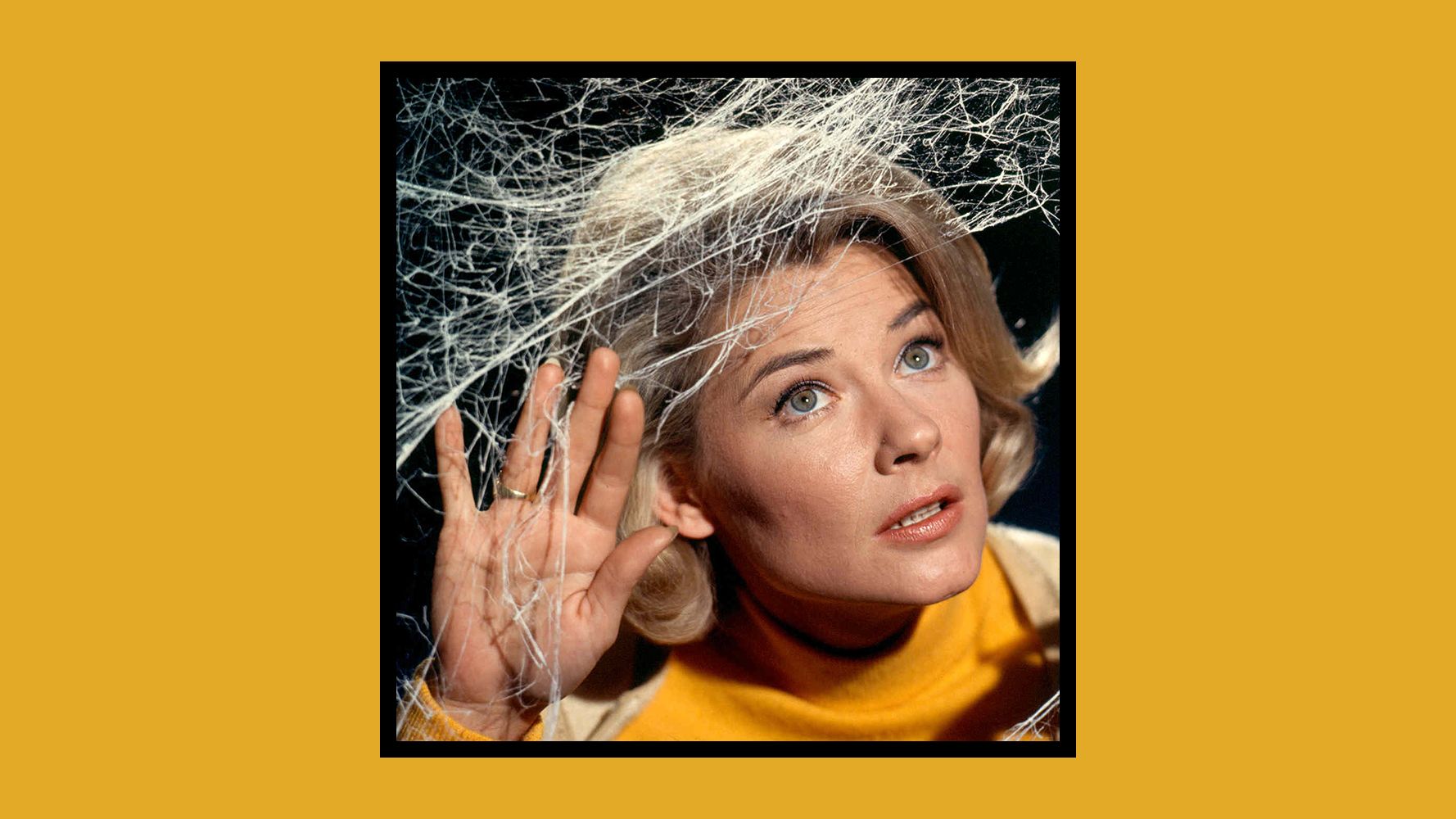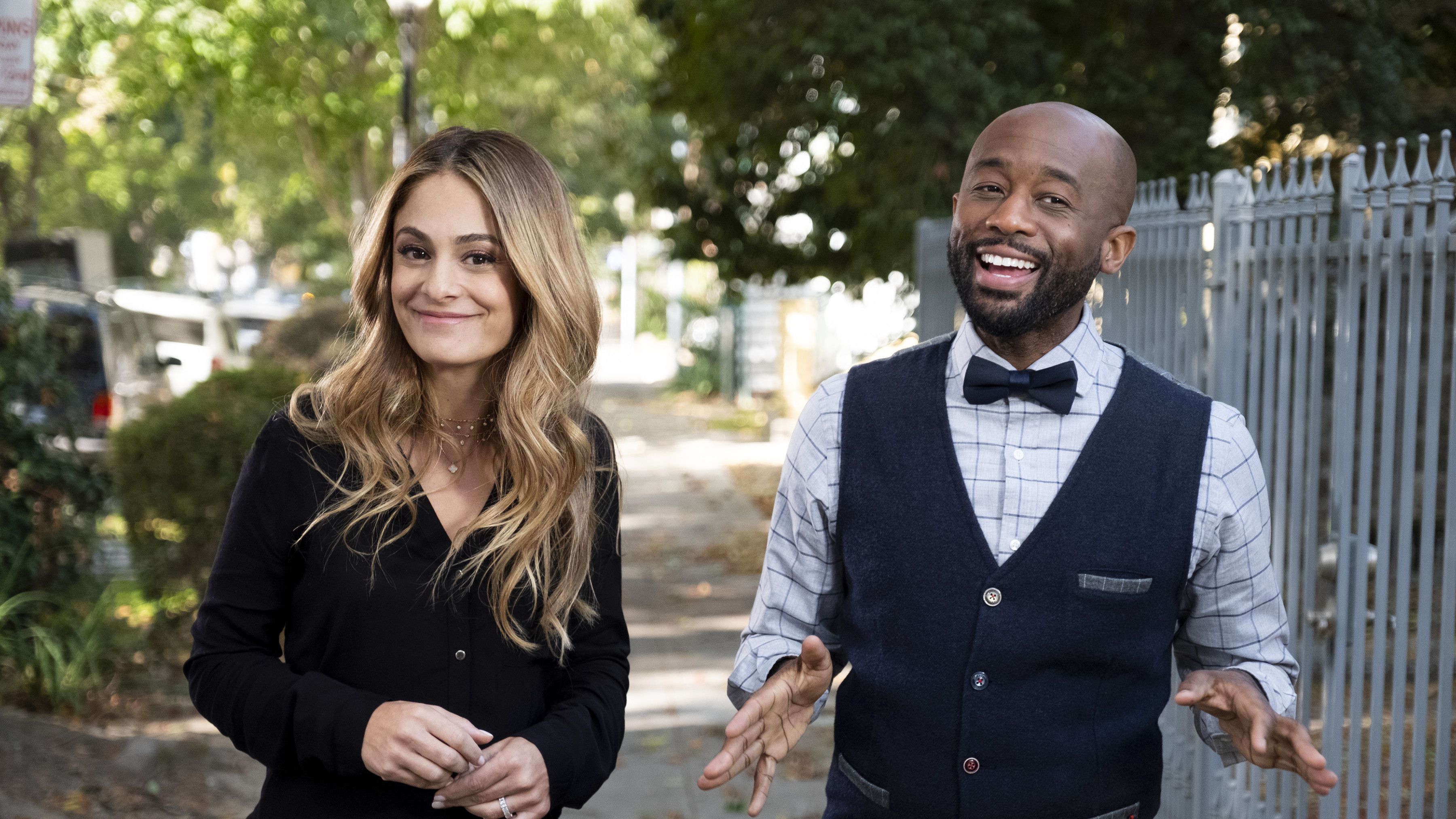The Host of 'Murder House Flipped' Helped Me Exorcise My Apartment of Its Bad Vibes
From the spirits lingering in my vintage jewelry to the breakups haunting my bed.


My dad died in our living room. The next day, half the outlets in the house stopped working. The stove wouldn’t light. The garage door opened by itself, twice. Our family is mindful of the unknown things between heaven and earth—my mom can speak languages she’s never learned, my brother is a Buddhist monk, and I have a psychic connection with many pieces of vintage Dior. So as the lamps flickered and the appliances shorted out, we all just laughed. My mom yelled, “Stu, cut it out!” and the circuits worked again.
Of course, even without fatalities, everyone’s space is a little bit haunted. There’s the coffee table your old roommate built…before joining a cult in Venice Beach and moving in with some girl named Meadowlark. A plaid flannel sheet set you used to love now dregs up nostalgia for the bass player you were sleeping with but never quite dating. And don’t even get me started on the crate of Ramones vinyl bequeathed by your best friend’s older brother in high school. All that décor may not have horror movie provenance, but still—it’s got ghosts.
Interior designer Mikel Welch agrees, even though, before this year, he didn’t believe in spirits. “But listen to me carefully,” he says. “I do now.” Welch is most famous for his layouts for Oprah Winfrey and Michelle Obama, but, thanks to the emergence of mobile streaming platform Quibi, he’s made the pivot from to-die-for mahogany floors…to floors where someone actually died. His new project is Murder House Flipped, which debuted on April 6. Over the course of Quibi’s bite-sized video segments, Welch and cohost Joelle Uzyel take homes—like a Sacramento property that’s “troubled,” the real estate euphemism for “past use as a serial killer’s lair”—and make them livable again.
“I could tell something was wrong as soon as I stepped into [the Sacramento] space,” Welch says, “and I am not a medium. I’m not a size medium and I’m definitely not a psychic medium. I can ‘read’ a room like RuPaul can ‘read’ wannabe Drag Queens, but this house was just so obviously disturbed. It was like the walls just vibrated with trauma.” And though that last sentence sounds a lot like something Alexis Rose would say about someone else’s walk-in closet, it’s not entirely fiction. The cultural idea of a haunted house is centuries old and spans continents, from Japan’s famously eerie obake yashiki to Mexico’s Isla de las Muñecas. So if self-quarantine during the coronavirus pandemic has you stuck living with your own ghosts—the flashbacks of a bad breakup or the empty space where someone you loved used to be—Welch has some handy tips.
“If you can do one thing to get rid of a ghost, it’s remove the floor,” he says. “Get the negative energy and any remnants of the actual body out of your home. Tear up the carpet for sure. And think about some new coats of paint—nothing dark. You want bright, you want cheery, you want no chance that some trapped, wayward energy is going to bury deep in some corner because you didn’t give it enough lighting.”

Murder House Flip hosts Joelle Uzyel and Mikel Welch.
The good news: Most of us don’t have an actual specter floating around our kitchens like a Hogwarts holograph. The bad news: “ghosts are just bad energy,” says Welch. “And for that,” he announces gleefully, “there’s bleach and a match.” Yes, he’s serious. “The number one mistake I see with my clients is they’ve got boxes of stuff that’s not theirs, but they won’t get rid of it, because they’re afraid to fully let go of the person it belonged to. Burn the pictures of you two together. Burn his clothes, even if that oversized sweater looks great on you… Or okay, if you can’t do a bonfire, at least donate them. Get them out of your space, immediately. He’s garbage; his stuff needs to go in the garbage.”
But this part gets tricky. Two of my exes… wait, three… fuck, five… are artists, and some of their work still decks my halls. One photograph is just too gorgeous to get rid of, one painting is dumb but begrudgingly valuable to contemporary art buyers, and one sculpture is a very practical doorstop. "Definitely trash the doorstop. That’s just an excuse. Throw it out,” Welch encourages. And so I do, literally letting it shatter in a giant garbage bag. It is the most emotionally fulfilling thing I do all day.
Get exclusive access to fashion and beauty trends, hot-off-the-press celebrity news, and more.
Welch also suggests exorcising any hurt feelings—and any lingering hope—by completely changing your bed. “It’s a symbol of your relationship!” he cries. “There’s a reason ‘the marriage bed’ is such a thing in old literature, and even if it’s not marriage, it’s definitely, I mean, a union going on in there.” To dissolve it, take some sandpaper and strip away as much of the frame’s exterior as you can. Then repaint it and get entirely new bedding. And splurge on candles. “You don’t want anything that smells like your ex,” says Welch. “You need new sheets, a new comforter, and definitely a new scent that you can bring all the way into the space. People love to talk about ‘sage-ing’ the bad energy, but if you don’t have any, you can do it with Le Labo instead. Just make sure the smell is something completely new.”
Having helped my friend Ash do this exact thing with her non-married bed a few years ago, I feel awfully smug. Until I realize the very comforter I type this article on was bought for a move-in that never happened because: musicians. To the back of the closet it goes, replaced by a duvet from the MoMA store that I stole from my parents’ house. (Sorry, Mom!) I bounce on the bed a little, and yeah, it’s fun to revamp a space with something as simple as a blanket.
But what if what’s completely new to you is actually hundreds of years old. Can items themselves be haunted, or does that only happen in Mummy movies? “As someone who loves vintage design, that’s a difficult area to address,” Welch says. “It’s true that vintage items did come from another source, and you don’t know what type of energy happened in that space. If it’s giving you a bad vibe, you can sit down and have a conversation with any spirits that might be holding onto it. I know that sounds crazy, but all you have to do is look at the item, feel its energy, and then say, ‘It’s okay to let go of this. I’m asking you to go. You don’t belong here. You can go.’ I really think it does work. And, honestly,” he laughs, “it better work! Because if I find a beautiful Chinese credenza from the 1700s with original hardware, I am not getting rid of that thing. There’s no way I’m letting a ghost get in the way of my décor.”
I run my fingers across a 1980s Tiffany bracelet in my lap and wonder if it is haunted. What if a debutante wore it right before she went broke? What if a mafia man bought it for his mistress, who later murdered him in a swirl of cocaine and rage? What if I stopped watching Goodfellas while writing this story? I don’t know. But just in case, I pick up the silver cuff (acquired at a consignment store in Los Angeles) and say, “Do you have a ghost? You need to go. You’re killing my vibe.” I wait for a second and nothing happens. Well, wait, that’s not true. I do start laughing pretty hard, because I am talking to a piece of jewelry like Shelley Long in Troop Beverly Hills. Then I check all the outlets in my bedroom to make sure they still work—you know, just in case.

For more stories like this, including celebrity news, beauty and fashion advice, savvy political commentary, and fascinating features, sign up for the Marie Claire newsletter.
RELATED STORIES


Faran Krentcil is a fashion writer for Marie Claire and a contributor for Elle, The Wall Street Journal, Harper's Bazaar, and the BBC. She is the founding editor of Fashionista.com and a former Tumblr style ambassador. She is also an illustrator who has done work for Bergdorf Goodman, Topshop, and Bleach London. Faran is currently a professor of fashion journalism and critical theory at Parsons School of Design and The New School. She lives between New York City and Narnia.
